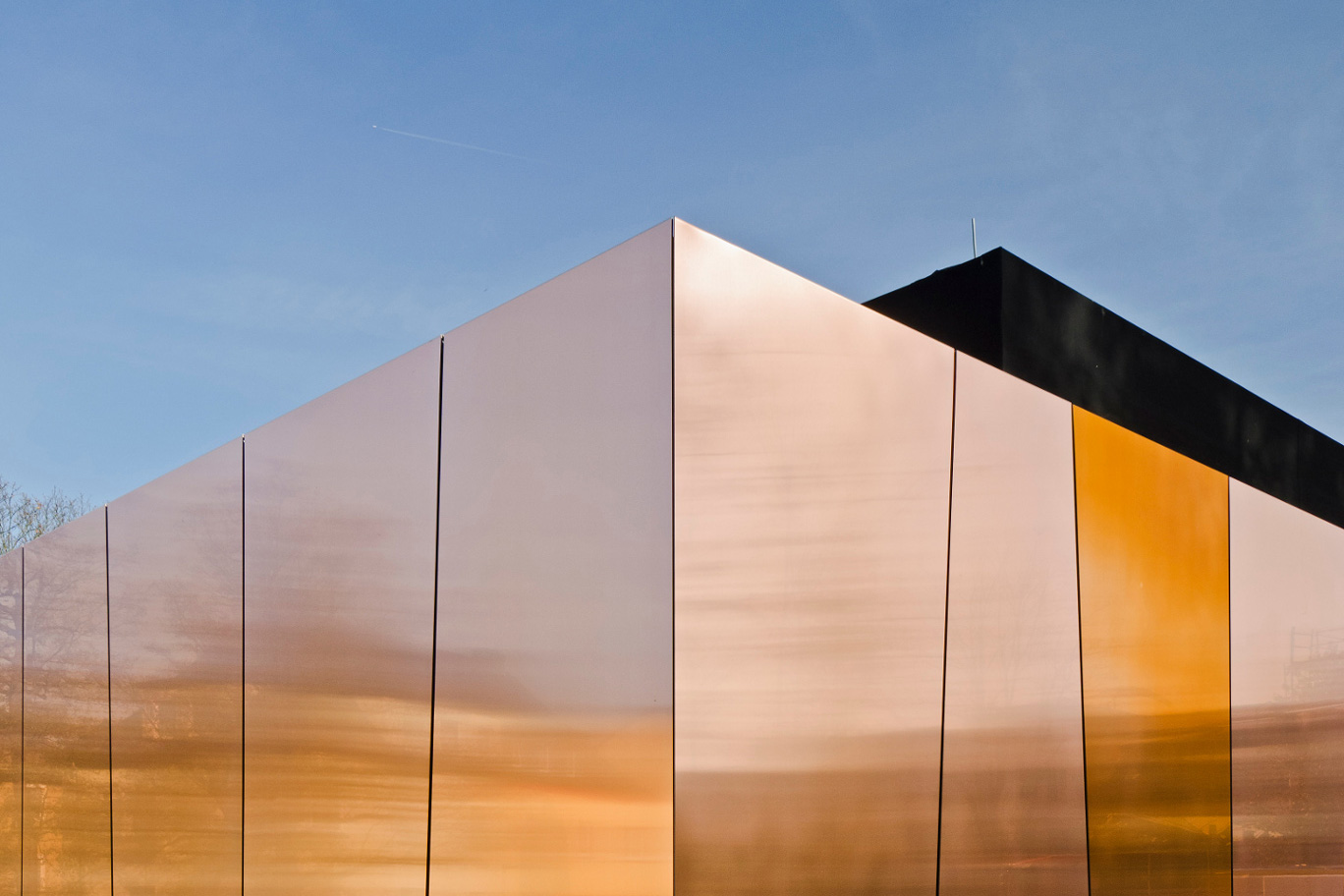
Architecture
Everyone knows the beautiful green roofs on historic buildings. The longevity of copper is proverbial. Not least for this reason, architects and builders have increasingly used this beautiful utility metal in recent years in the implementation of modern buildings as well as modernisation and renovation – not least because of its special sustainability and importance for the Circular Economy. And “Green Building” is also not feasible without copper.
Today it plays a significant role in roofing, exterior wall cladding and roof drainage. The interest in copper in today’s architecture is based on economic and design considerations and also, in combination with other natural building materials, on an increasing sensitivity towards the built environment.
Copper materials can be used to realise exciting architectural applications that give every building an individual character.
The outstanding properties that copper naturally brings with are essentially:
- Long service life due to extraordinary corrosion resistance against atmospheric influences and against condensation water.
- Good workability when designing difficult construction details
- No impairment of formability even at low temperatures
- Harmonious adaptation to other building materials due to a natural material surface. The patina makes the copper more beautiful with age
- Economic efficiency, low maintenance costs, no cleaning
- Copper is 100% recyclable. Its high degree of purity guarantees reuse of the same quality. Downcycling, as occurs with other materials, does not happen with copper.
- The joining technique of hemming allows for a high degree of flexibility in cuts and difficult construction details. With the further development of old handicraft techniques and the addition of modern manufacturing and processing methods, a high technical and design standard has been achieved.
- Copper is not endangered by other metals due to its position on the positive side of the electrochemical voltage series.
- Copper is a sustainable material due to its economic and ecological properties.
Download brochure
Are you looking for a different content?